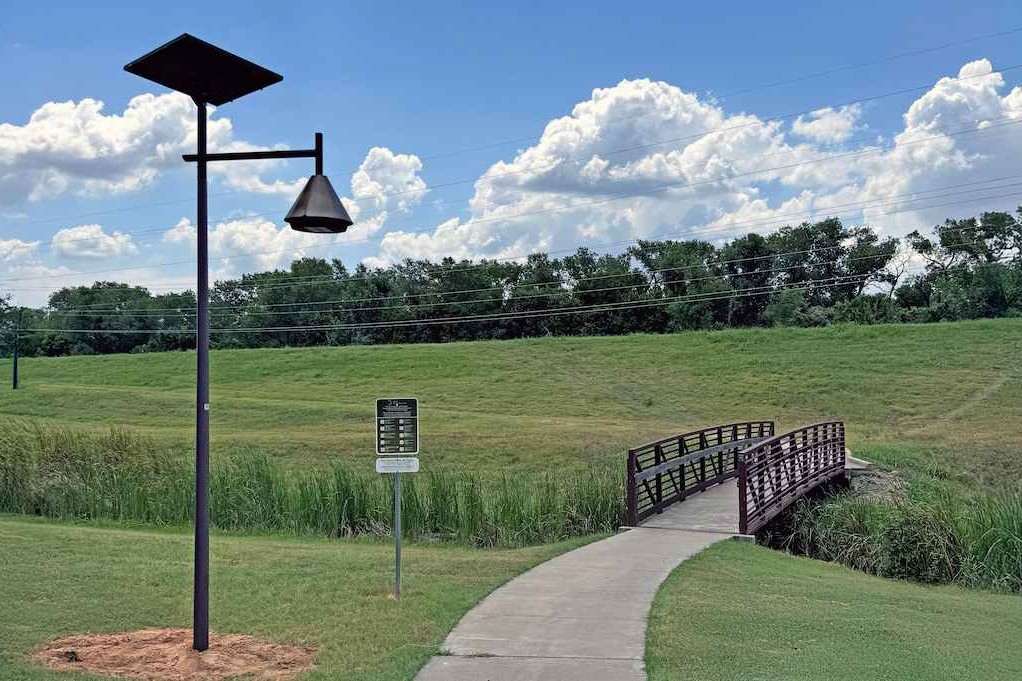Why Smart Solar Lighting Matters More Than Ever
As cities work to make parks, trails, and public walkways safer and more accessible, solar lighting has emerged as an appealing solution—clean, trenchless, and increasingly cost-effective. But not all solar lighting is created equal. Many systems perform well on paper but fail in the real world—especially when conditions change, batteries age, or the weather doesn’t cooperate.
That’s where smart solar lighting makes the difference. These systems go beyond basic “sunlight in, light out” mechanics. They actively monitor energy input, adjust lighting output, and optimize performance in real time. For municipalities, this means consistent lighting every night of the year—with fewer service calls, fewer surprises, and stronger community trust.
Understanding how these systems work—and why the details matter—can help city planners, engineers, and sustainability leaders make better decisions for long-term performance and public safety.
Table of Contents
How Smart Solar Pathway Lighting Works
At a glance, all solar lights might seem similar—panels on top, lights below. But for public infrastructure, performance depends on much more than appearance. Behind every reliable solar street light is a carefully balanced system of components working together. Fonroche’s SmartLight systems, for example, are designed to deliver 365 nights of lighting per year through a fully integrated, autonomous approach.
Each Fonroche light operates as a self-contained unit that includes:
- High-efficiency photovoltaic panels
Capture and convert solar energy throughout the day—even in low-light conditions. - Long-life NiMH batteries
Store power reliably and are designed for up to 12 years of performance. Unlike lithium-ion, they’re safer and 98% recyclable. - LED light engine with optics
Provides low-glare, targeted illumination that meets lighting standards for public pathways. - Power 365 energy management system
This is the brain of the system. It dynamically adjusts lighting output based on real-time conditions—weather, time of year, battery charge—to ensure uninterrupted performance. - Optional remote monitoring via Fonroche Connect
Allows asset managers to track battery health, receive alerts, and optimize performance without field visits.
Because Fonroche designs and tests every component in-house—including through rigorous climate chamber simulations—their systems are engineered to perform reliably in diverse environments, from coastal parks to desert trails.

Inside Power 365: Smart Lighting in Action
At the core of every Fonroche SmartLight system is Power 365—a proprietary energy management platform that ensures each light operates independently and intelligently, every night of the year.
Unlike basic solar systems that simply turn on at dusk and off at dawn, Power 365 adapts. It calculates energy input, battery status, and environmental conditions to determine the most efficient way to deliver light. This level of control helps municipalities avoid common pitfalls of traditional solar lighting—like early dimming, full outages, or battery failure during winter months.
Here’s how Power 365 works behind the scenes:
- Dynamic lighting profiles: Adjusts brightness based on time of night, foot traffic, or seasonal solar availability.
- Battery protection logic: Prevents deep discharge and overcharging, extending battery life and reducing maintenance.
- Energy forecasting: Uses solar calendar data to plan lighting output and reserve capacity during low-sunlight periods.
- Auto-recovery mode: After several cloudy days, the system self-regulates light levels to avoid blackout.
- Seamless performance: Ensures consistent illumination—even in low-irradiation regions or shaded park areas.
Because Power 365 constantly balances generation, storage, and output, each Fonroche system delivers dependable lighting without manual intervention. That means park visit
Why Most Solar Pathway Lights Fail—and How Fonroche Prevents It
Many cities exploring solar lighting have heard the same concerns: “It won’t last through winter,” or “The batteries failed after a year.” These aren’t myths—they’re often based on real experiences with underpowered or consumer-grade solar products.
The most common reasons solar lights underperform include:
- Undersized panels or batteries that can’t store enough energy for year-round use
- No energy management system, leading to early battery drain and outages
- Poor component quality, especially with batteries exposed to extreme temperatures
- Lack of system sizing, where one-size-fits-all models ignore local climate or light level needs
Fonroche prevents these failures through a rigorously engineered, project-specific approach:
- Each project begins with a solar and photometric study, using 10 years of local weather data to size the PV and battery systems precisely.
- All components are tested in extreme climate chambers to simulate real-world stress—heat, cold, moisture, and corrosion.
- Batteries are NiMH, not lithium, for safety, stability, and longer service life.
- Smart diagnostics through Fonroche Connect reduce truck rolls and prevent minor issues from becoming outages.
By designing for long-term durability—not short-term savings—Fonroche helps cities avoid the hidden costs and reputational risks of failed solar lighting.

Lighting That Works for Your Community
Solar lighting is no longer an experiment—it’s essential infrastructure. But reliability depends on more than just sunshine. It requires smart systems, long-life components, and thoughtful design tailored to the environment.
Fonroche’s approach to solar pathway lighting goes beyond “off-grid.” With Power 365 and project-specific engineering, cities can count on consistent performance, low maintenance, and long-term value. From neighborhood trails to regional park systems, this technology delivers what communities need: lighting that’s dependable, sustainable, and built to last.
Curious how smart solar could work in your community? Connect with Fonroche Lighting America to explore site-specific solutions designed to meet your safety, sustainability, and public infrastructure goals.

